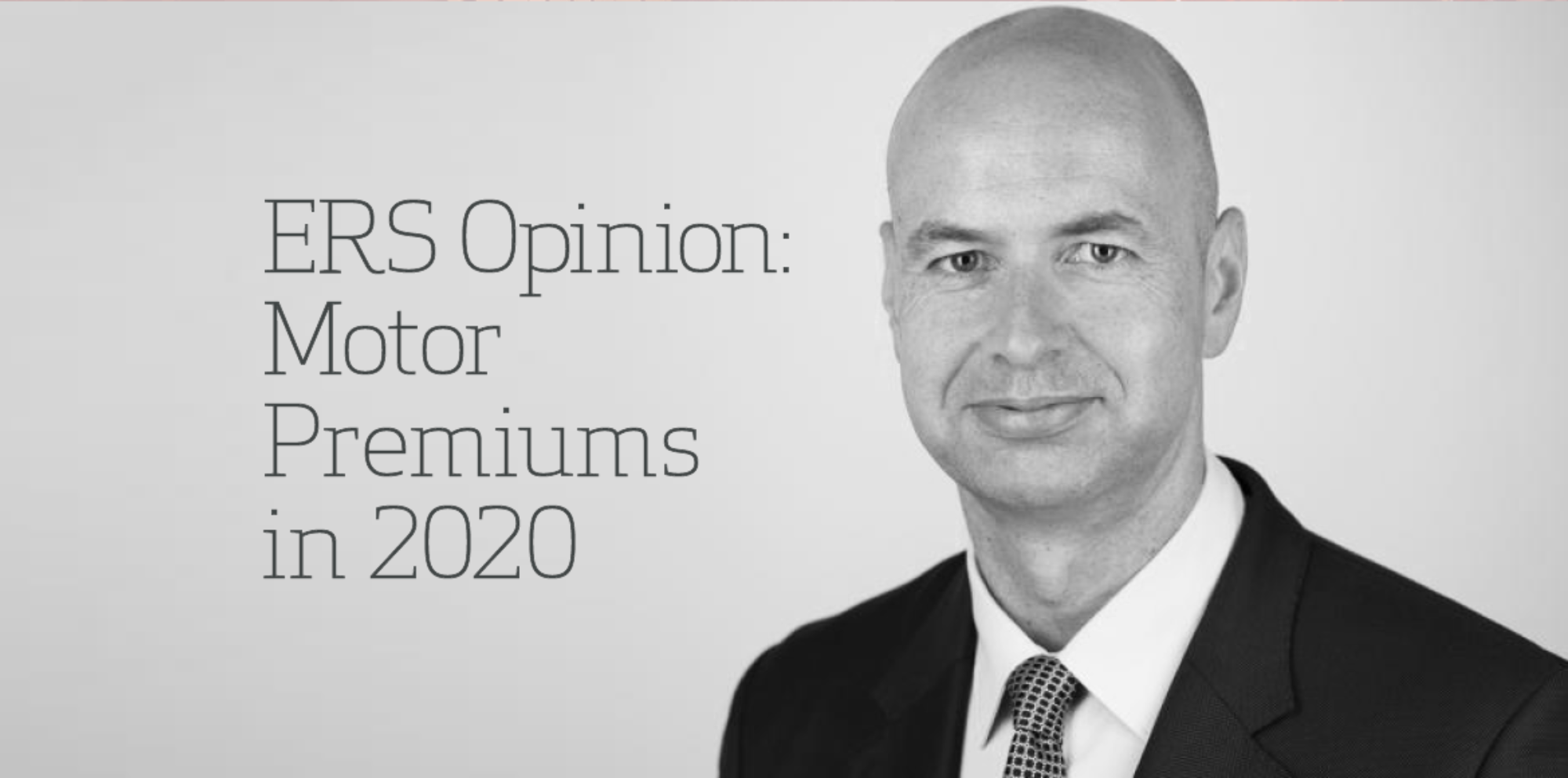In November 2019, Ernst & Young analysed the performance of the UK motor market and summarised that, whilst 2017 and 2018 were the first two consecutive years of profit for the motor insurance market in the last 40 years, their view was that in 2019, many insurers hadn’t increased their rates enough to cover claims inflation.
This lack of premium increase led Ernst & Young to predict that the motor market’s average Combined Operating Ratio in 2019 will be 106% - making the sector loss making again. This forecast will have a significant impact on how insurers price in 2020. For those that haven’t taken the necessary corrective action through 2019, considerable price increases will be required to return to profit.
However, an increase to cover last year’s claims inflation won’t be enough for some insurers to return to profitability. ERS Active Underwriter, Martin Hall explains the three headwinds that all insurers will have to account for in their 2020 pricing.

Reinsurers carry the risk for insurer’s largest claims. A big influence in the costs of these claims is an assumption that the money awarded will earn interest over time - the Ogden rate is used in this calculation. During 2019 the Ogden rate changed from -0.75% to -0.25%.
This change was not expected by most insurers (previous guidance was for the Ogden rate to be set somewhere between 0% and 1%) and means that the cost of claims will be higher than anticipated. Due to this increase in claims costs, many of these claims will now be picked up by reinsurers who will, in turn, increase their rates to reflect their additional exposure.
Additionally, there is a change in the income assumptions that reinsurers will receive on the investments of the premiums they hold before paying claims.
ERS Opinion
Most reinsurance contracts are renewed annually, and many were due on the 1st January. Feedback we have received is that the market increases were up to 30%. We also know there were less reinsurers providing motor capacity which contributed to increased prices due to less competition.
ERS’ reinsurance will add several million pounds of expense to the business. To stand still, we need to collect that amount in additional premium at the same level of exposure, which roughly equates to increasing all prices by 1.6%.
This increase will make trading for many motor MGA’s more difficult, as their capacity providers will insist that they increase rates to cover the additional reinsurance costs. It is also possible that capacity providers will have to reduce their expenses to improve their profitability which may result in them paying MGA’s less commission which will squeeze their returns and viability.

All insurers pay an annual fee (a percentage of each insurer’s premium) to the MIB which contributes to a central fund that provides compensation to people involved in accidents with motorists that are either uninsured or that can’t be traced.
In 2020, the MIB levy is set to increase by 18% to £404m. All insurers will have to account for an increase in their expenses. This increase is due to several factors:
- The change in the Ogden rate
- Claims inflation for large claims
- Claims following acts of terrorism are now picked up by the MIB
- The MIB is building the small claims portal as part of the Civil Liabilities Act
- An increase to internal MIB operational costs
ERS Opinion
All insurers will have to cover these increases in costs as they’re directly proportional to their annual premium. Our MIB levy is increasing by 18% in 2020. We need to increase our premiums to maintain profitability. Overall, the MIB levy will increase ERS’ prices by 0.5% in 2020, just to stand still.

The latest vehicle technology, like bumper sensors, front and rear cameras, driver assistance in windscreens and video wing mirrors means that they’re becoming far more expensive to repair than ever before and we see a high level of accidental damage inflation in the claims we are settling. This inflation also applies when an ERS policyholder is involved in an accident with a third-party vehicle.
Interestingly, the ABI said that in the first quarter of 2019, repair costs were the highest since the ABI started collecting this data back in 2013. This trend is expected to continue into 2020 where further increases in damage claims cost of around 9% are expected.
New legislation has been passed in the Civil Liabilities Act, which aims to reduce the cost of whiplash and soft tissue injuries which can be recovered from within two years by providing a fixed tariff of damages. At the same time, the Small Claims court limit will be increased from £1,000 to £5,000 to deter claim farming solicitors. This will reduce the legal costs in claims settlements and most likely reduce the number of claims made. To allow unrepresented individuals to process their own claims, a portal is being developed for claimants to make their claims online. This portal is due to be launched in April 2020.
ERS Opinion
The delivery of the portal is important because some of the reductions in claims frequency that it’s expected to bring would have offset the increase in damage repairs. We’re keen for the portal to be successfully launched in early 2020 but are concerned that a rushed solution will do more harm than good and that a later delivery is better than one that’s poorly implemented. If the portal is delayed, we expect claims inflation to increase by 7% in 2020. In order to stand still, insurers will need to carry this increase in rate.
What does this all mean for rates in 2020?
These three headwinds mean that 2020 is likely to be one of the most unpredictable years in recent history for motor insurers. The uncertainties around claims inflation means all insurers will need to be agile and respond quickly.
We have made huge improvements in our MI, data and the speed we distribute rates into the market, through Insurer Hosted Pricing and eTrade. Even our most specialist manual risks are quoted faster than ever following investment in new technical pricing models.
One thing that is guaranteed is that rates will go up. The cost of reinsurance, increased MIB levy and accidental damage claims inflation will combine to have a significant impact in 2020. It is inevitable that these increases will apply to all insurers.
We believe that, on average, rates will need to increase between 8% and 10% in 2020. Whilst poorer performing risks will continue to see increased premiums, on this occasion, even clean risks will see rate increases too.
These are significant changes that will impact policyholders. What’s important is that they understand why their premiums have increased - brokers are best positioned to offer the advice and guidance they need. Whilst it’s not always an easy message to deliver, explaining price increases help ensure that a broker’s reputation remains intact and they won’t have to explain why their recommended insurer has suddenly reacted with severe price corrections or why it has failed and the premium is lost, some time in the future.
These headwinds will mean that, more than ever, brokers need to align with insurers that are not writing at low cost for short-term gain – as we’ve seen in 2019, that approach only leads to significant churn for brokers and their customers. Price increases are inevitable in 2020 and we’re confident that our approach will lead to a consistent experience for our broker partners and ensure that ERS remains a strong insurance partner. If you have any questions, or you want more information for you or your teams, please reach out to me or your ERS Regional Development Manager.
Martin Hall
Active Underwriter
ERS






